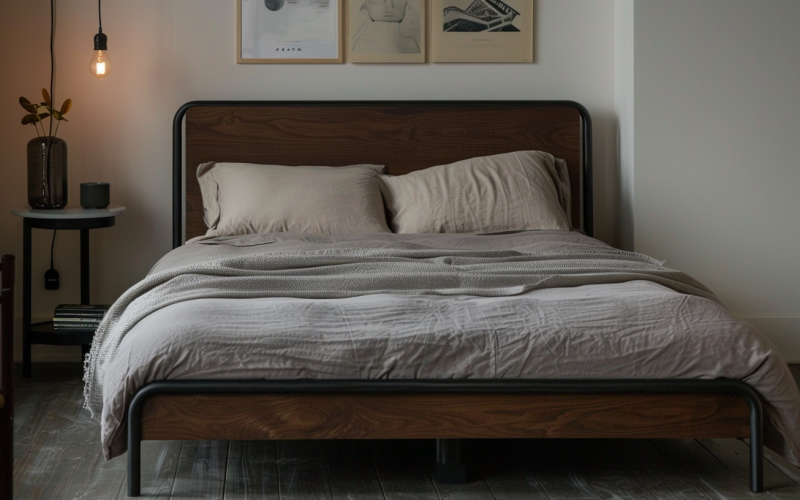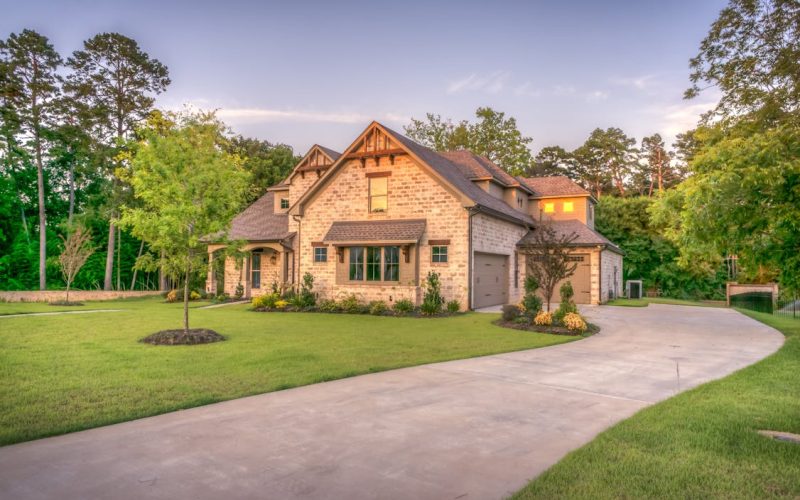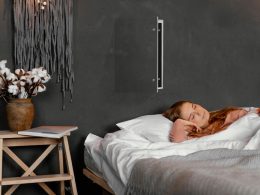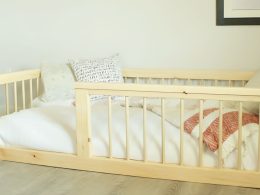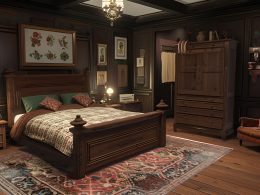Choosing the right bed frame can significantly impact your sleep quality and bedroom aesthetics. Whether you’re leaning towards a metal bed frame or a wooden one, each option has distinct advantages and drawbacks.
Metal bed frames tend to be less expensive, easy to assemble, and durable, whereas wooden frames offer a warm, sturdy presence and might better suit certain design preferences.
When deciding, consider your lifestyle and priorities. Metal bed frames are often lighter and easier to move, making them ideal for those who relocate frequently.
On the other hand, wooden bed frames typically provide a more solid and stable foundation, which can be beneficial for those seeking maximum comfort and robust construction. Additionally, wooden frames might better align with traditional or rustic interior designs.
The key deciding factor in choosing between metal and wood should align with your personal comfort and style preference. With various options available, you can find metal bed frames that offer durability and ease of maintenance, while wooden frames might cater to individuals seeking aesthetic beauty and a feeling of warmth in their bedroom.
Key Takeaways
- Metal bed frames are affordable and easy to move.
- Wooden bed frames are sturdy and offer a classic appearance.
- Choose based on your personal comfort and design preference.
Comparing Metal and Wood Bed Frames
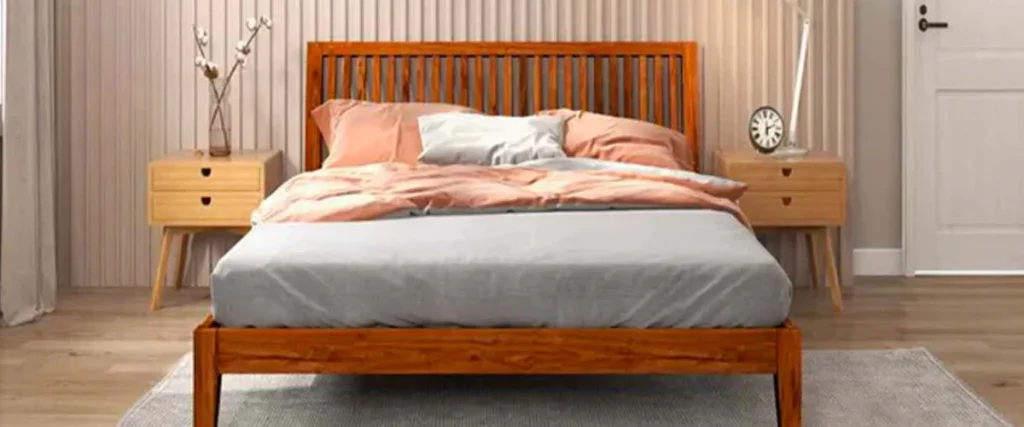
When selecting a bed frame, important considerations include the material’s characteristics, design appeal, and the comfort and stability it offers. Here’s a detailed comparison to help you make an informed decision.
Material Characteristics
Metal bed frames are typically made from steel or iron, offering strong support and long-term durability. They are resistant to common issues like termites and rot. However, metal can be prone to rust if not properly maintained, especially in humid environments.
Wood bed frames, often made from hardwoods like oak or walnut, are known for their sturdiness and unique grain patterns. Though robust, they can be susceptible to termites and may require periodic maintenance to avoid wear and tear. Wood also brings a certain charm and natural warmth to the bedroom.
|
Feature |
Metal |
Wood |
|---|---|---|
|
Durability |
Long-lasting, but may rust |
Sturdy, but may need maintenance |
|
Maintenance |
Low, need to prevent rust |
Periodic to prevent termites |
|
Sustainability |
Generally not eco-friendly |
Can be from sustainable sources |
Design and Aesthetics
Metal bed frames often feature minimalistic and contemporary designs. They can include sleek finishes and are available in various colors from matte black to polished chrome. Some also incorporate intricate designs on headboards and footboards.
Wood bed frames offer a variety of styles, from rustic to modern. The natural grain in wood provides a unique aesthetic appeal, and they can be stained or painted in multiple finishes to match any decor. Wood options include headboards with detailed carvings, adding to their visual charm.
|
Feature |
Metal |
Wood |
|---|---|---|
|
Style Options |
Modern, minimalistic, intricate designs |
Rustic, traditional, varied finishes and carvings |
|
Visual Appeal |
Sleek, polished |
Warm, natural grain patterns |
|
Customization |
Limited colors and designs |
Wide range of finishes and styles |
Comfort and Stability
Metal bed frames generally offer solid support with a robust slat system. This ensures stability and minimizes noise, though metal can sometimes be squeaky. Their lighter weight makes them easier to move and assemble.
Wood bed frames provide excellent stability due to their thicker material. They offer a more cushioned feel, which some users find enhances sleep quality. Wood frames are generally quieter than metal, reducing any disturbances from creaks or squeaks during the night.
|
Feature |
Metal |
Wood |
|---|---|---|
|
Support |
Strong, robust slats |
Very sturdy |
|
Noise |
Can be squeaky |
Generally quieter |
|
Assembly |
Easier to assemble |
Heavier, more challenging to move |
By understanding the key distinctions between metal and wood bed frames in terms of material characteristics, design, aesthetics, comfort, and stability, individuals can choose a bed frame that best meets their needs and personal preferences.
Practical Considerations

When choosing between a metal and wood bed frame, it is essential to evaluate factors such as lifestyle and space, budget and longevity, as well as health and environmental impacts. Each type of frame has unique advantages and drawbacks, which can influence your decision.
Lifestyle and Space
A key consideration is how the bed frame fits into your living space and aligns with your lifestyle. Metal frames tend to weigh less, making them easier to move and reassemble, which is ideal for those who frequently relocate or rearrange their space. Furthermore, metal frames often come with options for under-bed storage, which can be a crucial storage solution in smaller living areas.
On the other hand, wooden bed frames generally offer a more robust aesthetic, which might be more appealing for those looking to create a specific bedroom decor. The design of wooden frames can often offer more stability, particularly for larger mattress sizes. However, they are typically heavier and might require more effort during assembly and moving.
Budget and Longevity
Cost and durability are significant factors. Metal bed frames are commonly cheaper, with basic models starting as low as $40, while higher-end models rarely exceed $2,000. They also tend to be low maintenance, requiring only occasional tightening of screws and basic cleaning.
Wooden bed frames, although generally more expensive, provide longevity and value due to their durability. They often become family heirlooms passed down through generations. However, they may require more care, such as protecting against moisture and potential pests. The initial higher investment might be offset by their long-term use and timeless appeal.
Health and Environment
Health and environmental impacts should not be overlooked. Metal bed frames can sometimes feel colder to the touch and might pose a fire hazard in extreme cases. They may also contribute to electrical pollution due to their conductive nature, which might be a concern for some users.
Wooden bed frames are often seen as more sustainable, provided they are made from responsibly sourced timber. They are less likely to emit toxins compared to some treated metals. Disposal of wooden frames is generally easier and more environmentally friendly, as they can decompose naturally, unlike many metal counterparts.
By considering these practical aspects, one can make a more informed and nuanced decision about which bed frame is right for their specific needs and circumstances.
Conclusion
Choosing between metal and wood bed frames depends on individual needs and preferences. Metal bed frames are typically more affordable and easy to assemble, making them a convenient choice for those on a budget. They also offer a sleek, modern look.
Wooden bed frames are stronger and provide a more traditional aesthetic. They offer sturdy support and can be more comfortable due to their design and material. Though often pricier, their durability and style can justify the investment.
Thus, when deciding on a bed frame, consider factors such as budget, style preference, and long-term durability. This analysis should guide buyers in making an informed decision that best suits their bedroom needs.





